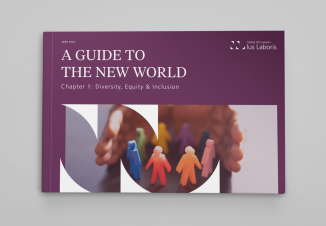
In this article we think about some potential benefits and pitfalls of work in the metaverse from the perspective of diversity and inclusion, considering a workplace staffed not just by humans but also by their avatars.
If employers are going to embrace the metaverse in the workplace and allow staff to interact within it as part of their working life, all staff will need to choose an avatar. An avatar is a character chosen as someone’s visual, digital self in the metaverse. The kind of avatar an individual chooses and how they choose to represent themselves in this virtual reality give rise to some interesting issues. On the one hand, having total freedom to choose an avatar could have some great benefits. You could choose to be gender–agnostic or choose characteristics which do not represent or reveal your real-world personal attributes. Not only would this allow a form of digital escapism, but could also help avoid discrimination, bringing down barriers for those with protected characteristics in the context of, for example, recruitment. These sorts of avatar choices could also be a very useful tool in equal opportunities training and other coaching contexts.
On the other hand, individuals may choose avatars whose appearance could cause offence and result in potential discrimination and/or harassment issues. Highly sexualised images of female characters might be chosen, or avatars with particular protected characteristics the individual in question does not share (e.g. ethnicity). Employers might, in such cases, be faced with complaints of harassment from staff on the basis of avatars’ perceived characteristics, rather than an individual’s actual characteristics. For example, in the UK, the Equality Act already provides that some protected characteristics can already be protected by ‘association’ or even ‘perception’. So although it remains to be seen how courts might deal with such claims, the potential for actionable claims is clear. Further, the current selection of avatars is insufficiently diverse and representative, lacking visibly disabled or pregnant avatars.
To try and assist with this, employers should think about whether they will have policies on what is permissible in terms of choice of avatar and how staff represent themselves in the metaverse, and careful wording will be required. These will be more complex than standard dress code–type policies and for some employers, likely those who are early adopters of the metaverse in the workplace, their preference may well be to allow staff to have total freedom around their choice of avatar. However employers try to monitor avatar choices, it won’t be possible to exclude the possibility of some staff finding others’ choices inappropriate or even discriminatory.
The use of social media in the workplace has already seen the blurring of boundaries between professional and personal worlds. This is likely to go further with the use of the metaverse. Should misconduct issues arise (e.g. alleged harassment involving an avatar) it will be tricky for employers to navigate possible disciplinary action. Whilst there is no suggestion that an avatar is an independent thinker or that the person responsible for it is not responsible for the acts of their avatar, things may appear differently if one accepts the premise that in entering the metaverse, an individual is moving between the real and virtual worlds. We may see arguments from staff that what takes place in the virtual world is not actionable in the real world. Further, if an individual uses their avatar both in the workplace and outside of the workplace, this gives rise to further potential complications around whether inappropriate behaviour by the avatar in the metaverse more generally is likely to impact an individual’s professional life.
Sadly, issues such as sexual harassment remain a problem in the real world and they are also likely to become an issue in the metaverse. Indeed, some apps already have mandatory distance rules in place between avatars to seek to limit the risks here in light of conduct within the metaverse. But even this is not a panacea. In the UK, for example, even with such rules or policies in place, you do not need to have physically touched someone to have sexually harassed them. It remains to be seen whether employers will, in practice, need to face disciplining employees for the acts of their avatars in the metaverse. It does, however, seem likely, particularly as more employers look to adopt the metaverse as part of the future of work.
The metaverse presents new and exciting opportunities for the world of work. But it also presents new challenges for employment law, and for diversity and inclusion in particular. We will watch with interest to see how these play out.


